I read that ludicrous line, “without historical intent…” on a museum explanatory sheet today, about…
Jesus H. Christ…
…does Lecce have a lot of churches. Mama Mia Cher and Meryl a lot. 90,000 people and 40 choices in the old city alone. We set out to discover them all. Not.
However, we did the rounds, and it was a lot of round and round. But today was only 28, 28.5, with some breeze, so easier to function than the 34-35 degrees of the last few days. So, in no particular order, here are some noteworthy Baroque masterpieces.
Basilica Santa Croce; the facade was under reconstruction but the interior was all Diana Vreeland wow.
San Matteo. It’s, you know, Baroque. It replaced a chapel which was attached to a convent, hence the second story for nuns to scurry about unnoticed.
Sant’Angelo. Off the beaten path and very old. So when you’re not feeling the Baroque thing full on a “simpler” alternative.
Chiesa del Gesu. Or, as with all these churches, there is a second name, Our Lady of Good Counsel. Once home to the Jesuits. Has that feeling you’re not really welcome but feel free to tithe. (Notice how the last picture in the gallery is another church? That’s just to keep you on your toes.)
Irene. I mean forget her. This could be Lucy Van Pelt offering psychiatric advice for a nickel.
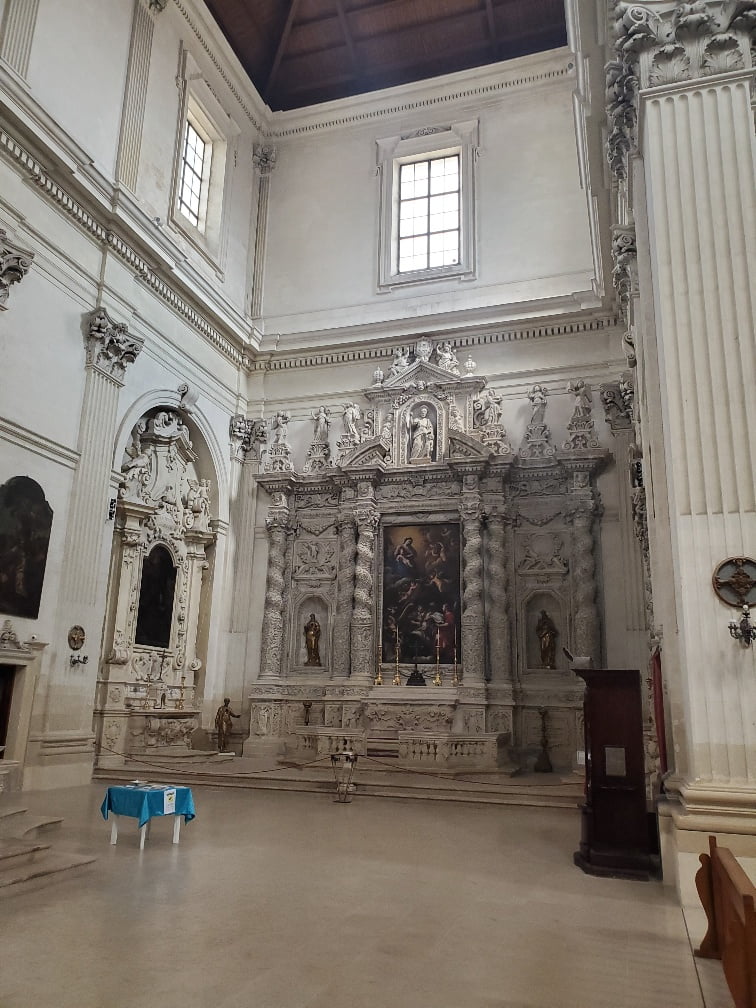
Santa Chiara (which had a few novel architectural notes on the signage, one that it boasted “an overbearing convex façade” as well as “worthy consideration should be given to it’s papier-mache ceiling from the 18th century”).
Of course the “most spectacular” of all is the duomo in the centre which is attached to the Bishop’s palace where the Napoli royals would stay when visiting.
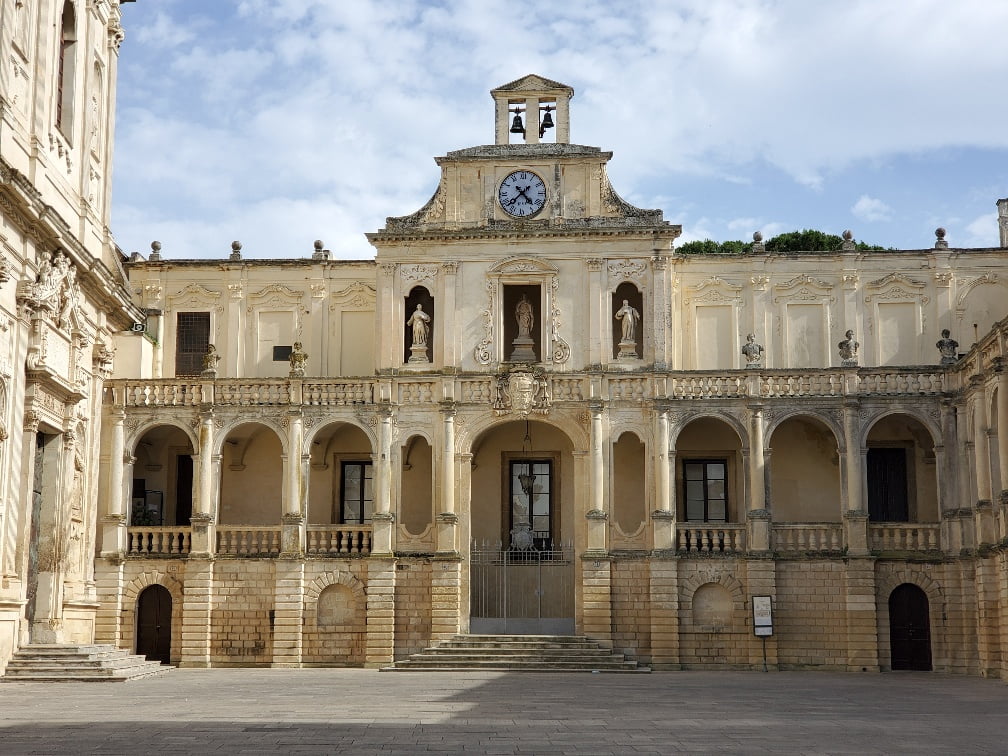
The museum in the palace was a bit hard to figure intention. See some top of the pops from 1690, Judith with the head of Holofernes, some “modern” religious art from Venezuela that looks suspiciously like Japanese anime, and the Bishop’s private chapel.
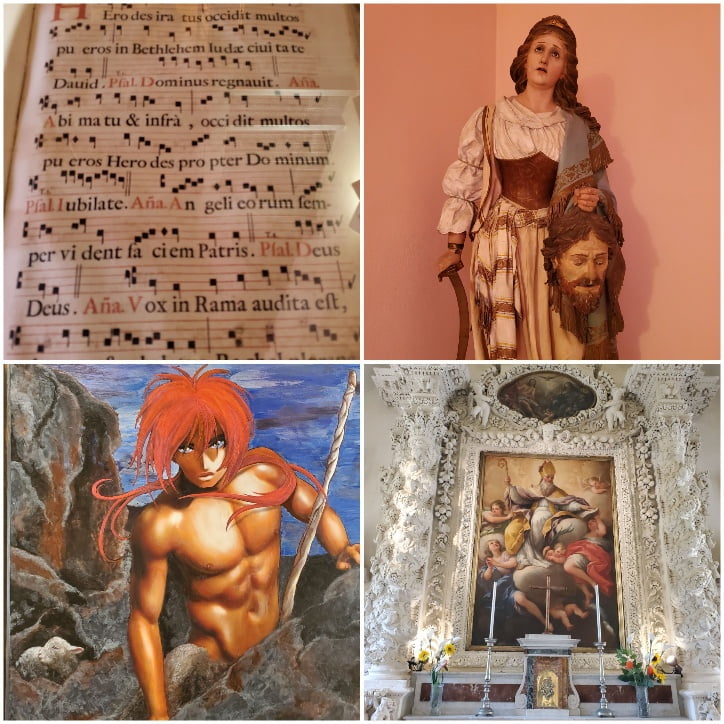
As for the duomo proper, the interior lacked for nothing except religious moderation.
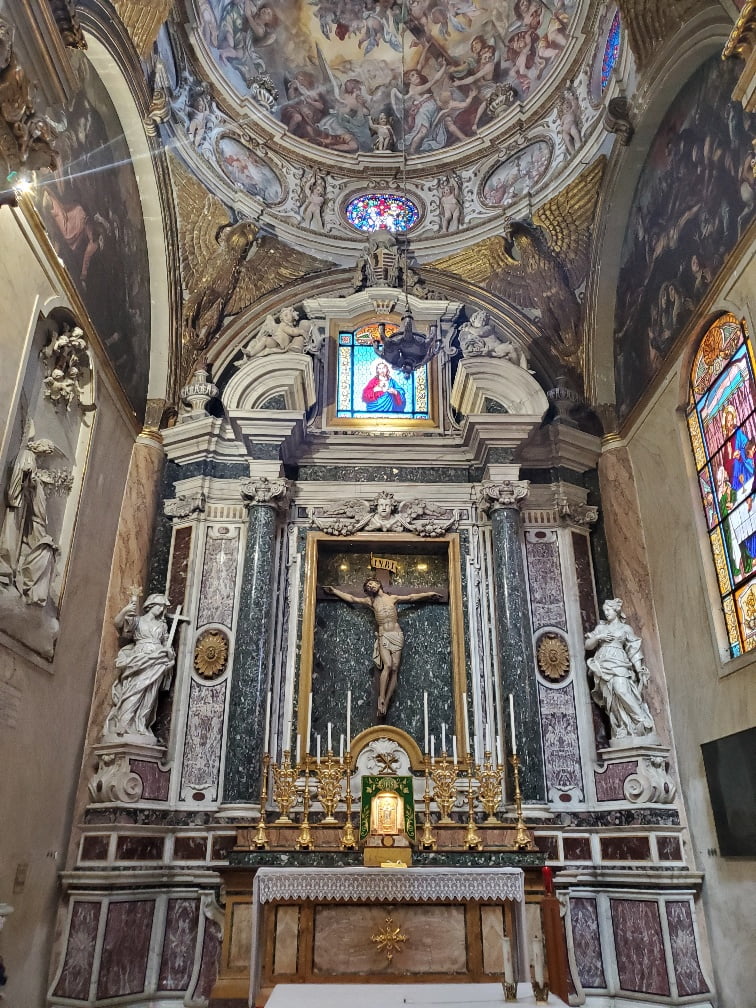
The most spectacular bit was, though, the crypt, with no photographs allowed, and a young guard snapping at people. I lifted one shot off the net. What’s been excavated is exquisite, spartan and regimented and fearsome. What’s not been renovated, parts of which were on view through plexiglass, included reams of skeletons and ashes. Walking among the pillars, cool and damp, it felt a bit Quo Vadis, a little bit I, Claudius.

At the end of it you could sort of feel Martin Luther seething at the extravagance of it all and sympathize with the tipping point which led to Lutheranism.
On another note, we had pretty much done the old town in less than five hours. We passed by the three original entrances which remain. The Porta San Biagio, near our accommodation:
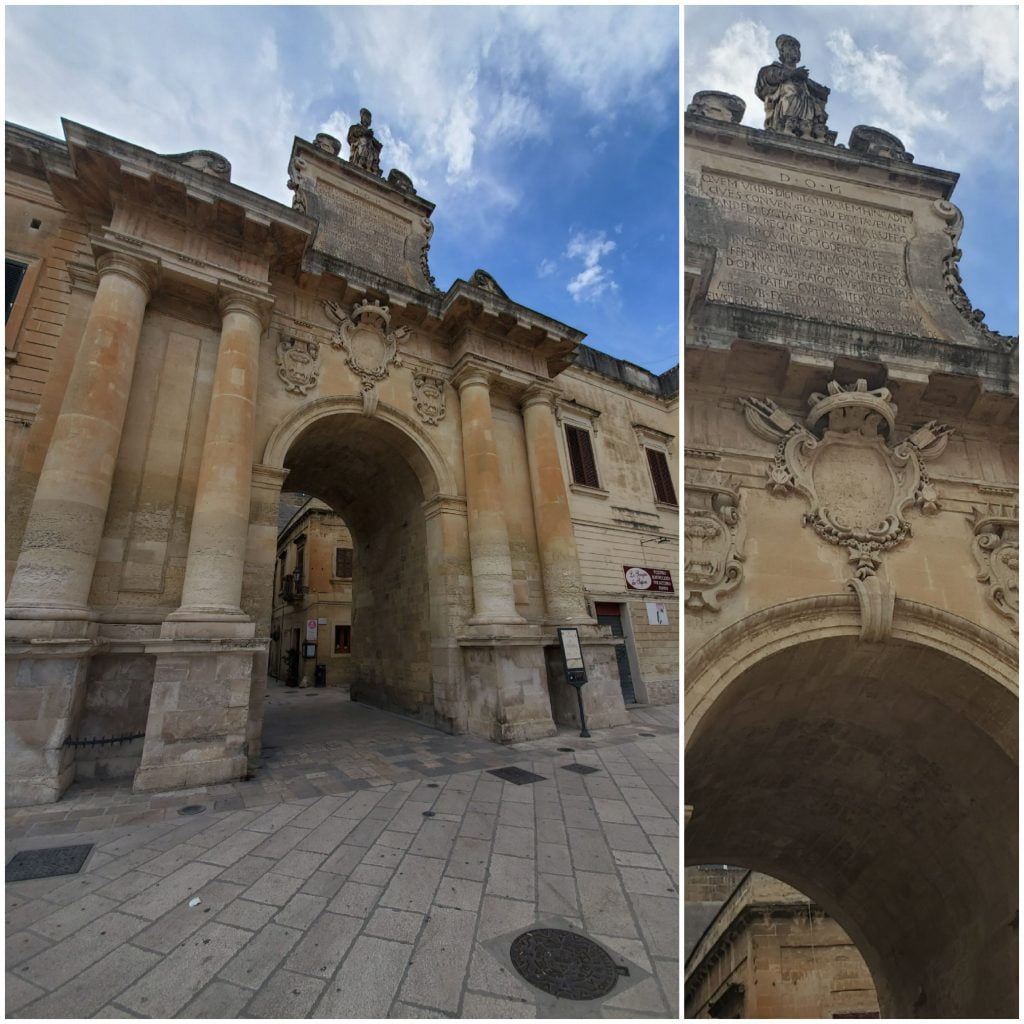
The Porta Rudiae:
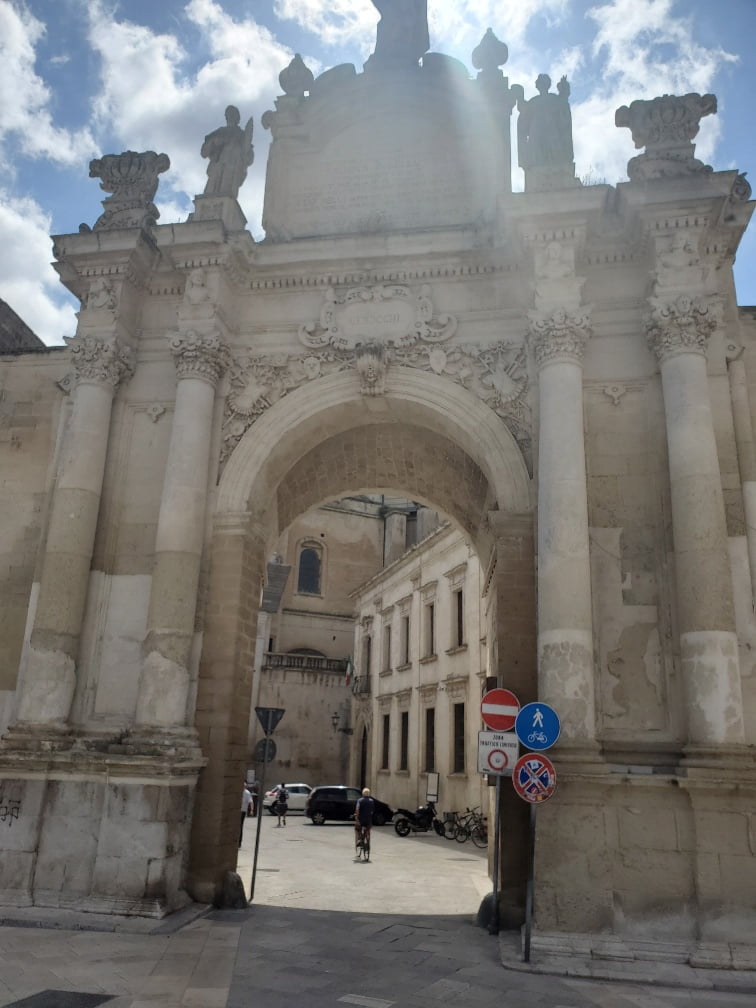
And the lovely Porta Napoli, which has a row of mature oleander and an obelisk on the exterior piazza:

Lecce, like Sienna, is a point and shoot village: Point your camera and the charm oozes.
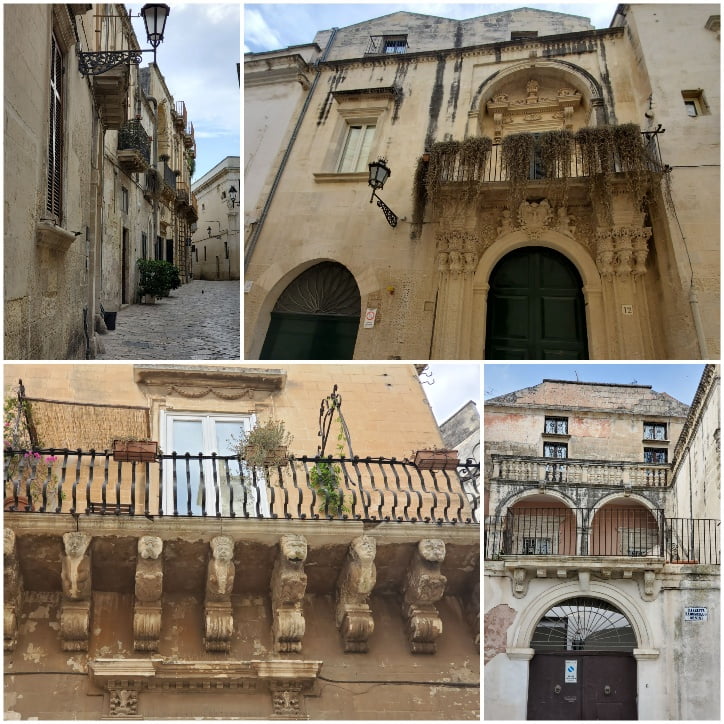


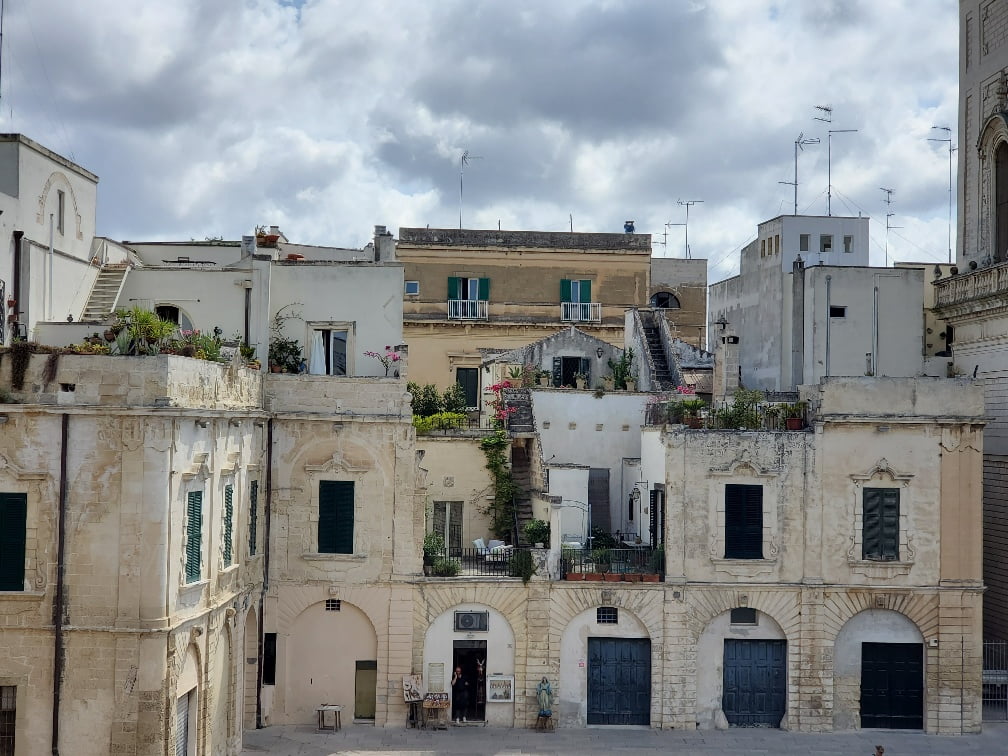
But it’s also unlike Sienna. There’s plenty of decrepit-ness, still to be rehabilitated old town, and the new town has a banality which is truly unfortunate. But look below: This is the view as I write on the terrace at the BnB. It’s a very, very appealing decrepit.
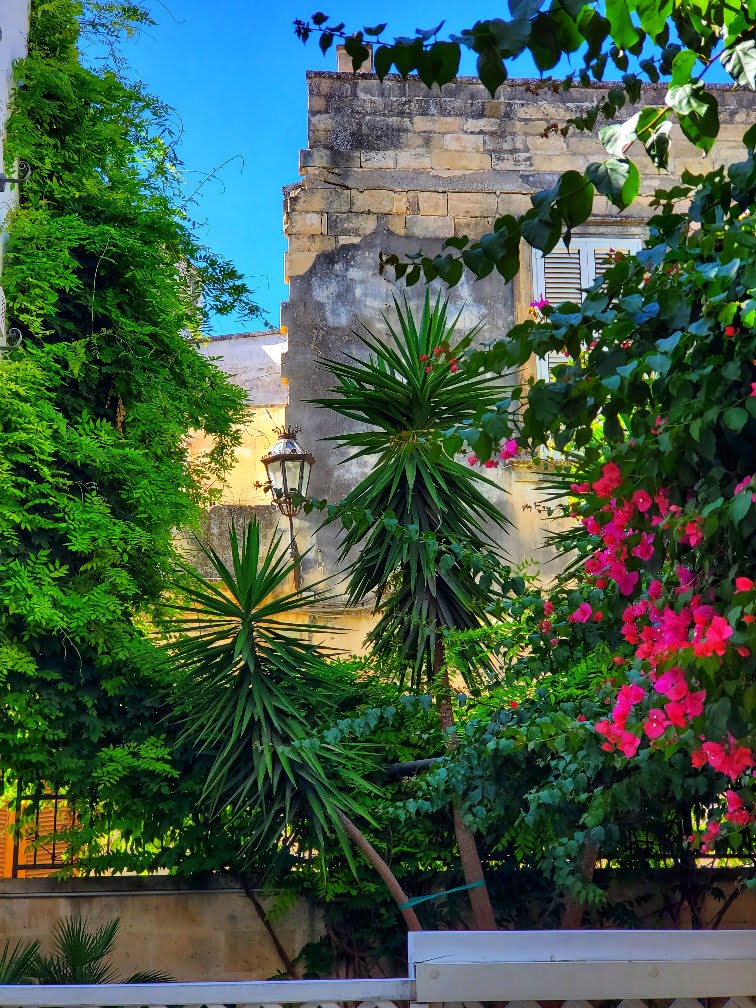
For the afternoon we drove a little south to the whitewashed seaside town of Otranto. The old town has an Aragonese castle (so the Spanish once held sway, didn’t Wiki the era), with lovely cobbled streets and a little more upmarket than Lecce (think, say, Carmel in California), with a pleasant enough old town. At one point we were ambushed by bougainvillea.
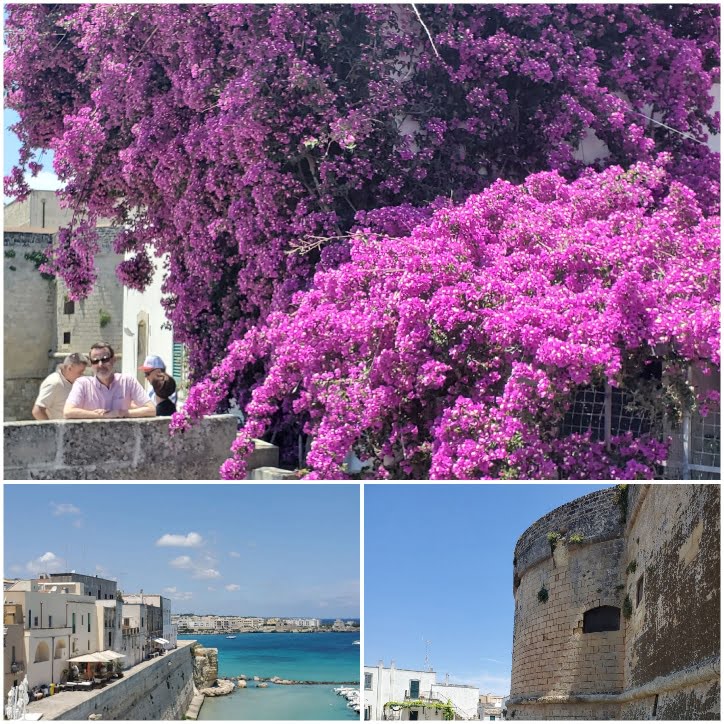

There was a wedding at the Santa Maria Annunziata cathedral. We couldn’t go inside (we’re on a record here for attending church in a single day; this was devastating…), but we did make it there in time to visit a tiny byzantine church called San Pietro, the oldest church we’ve visited (erected c. 968 AD) with spectacular frescoes in superb nick: A full century older than the cathedral—take that Santa Maria whomever.
Exhausted from the religiousity of the day we parked ourselves on the lido at a non-descript bar which turned out to have locally crafted beer of superior quality, and watched the bathing crowds across the harbour.
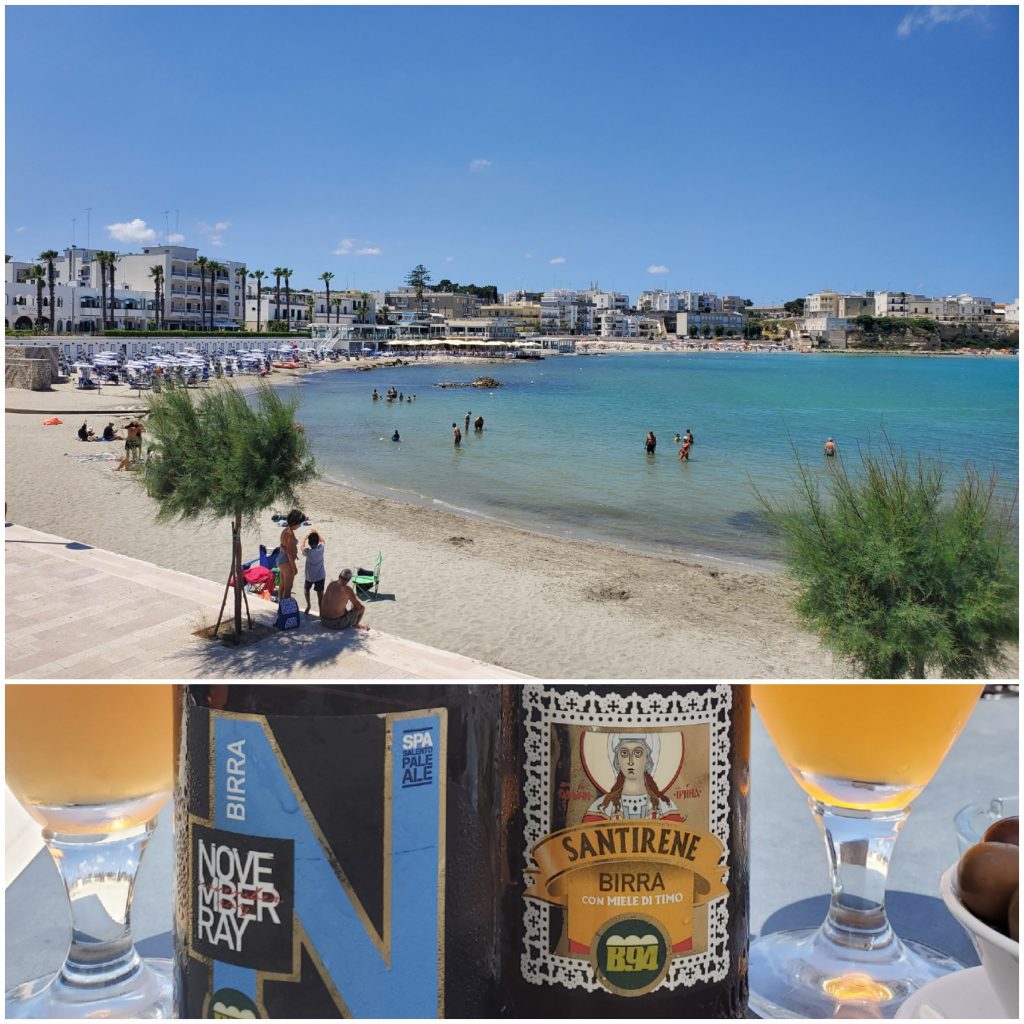
Refreshed we drove out to the Punta Palascia Lighthouse; there was no reason to do this except a “been there done that” thing: It’s the eastern most point of Italy and the narrowest spot on the Gulf of Taranto. In the collage below what are you looking at? Top towards Montenegro, middle towards Albania, bottom towards Corfu.

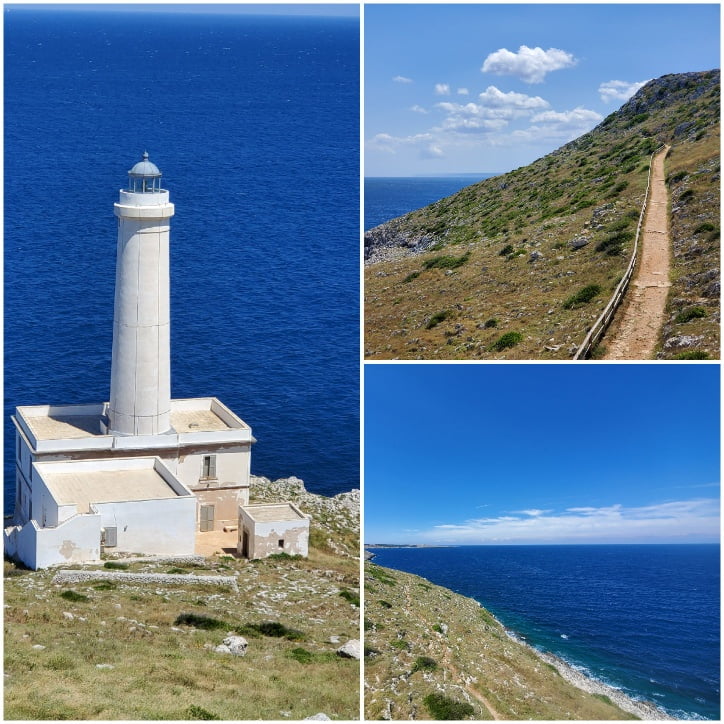
We finished the day at a popular spot serving “poverty” cuisine, meaning the local foods families ate for centuries: fava beans with chicory; eggplant Parmesan; meatballs stuffed with ham and cheese; couscous with vegetables. Hearty and simple and filling.
Did I show you this picture earlier?

This Post Has 2 Comments
Comments are closed.
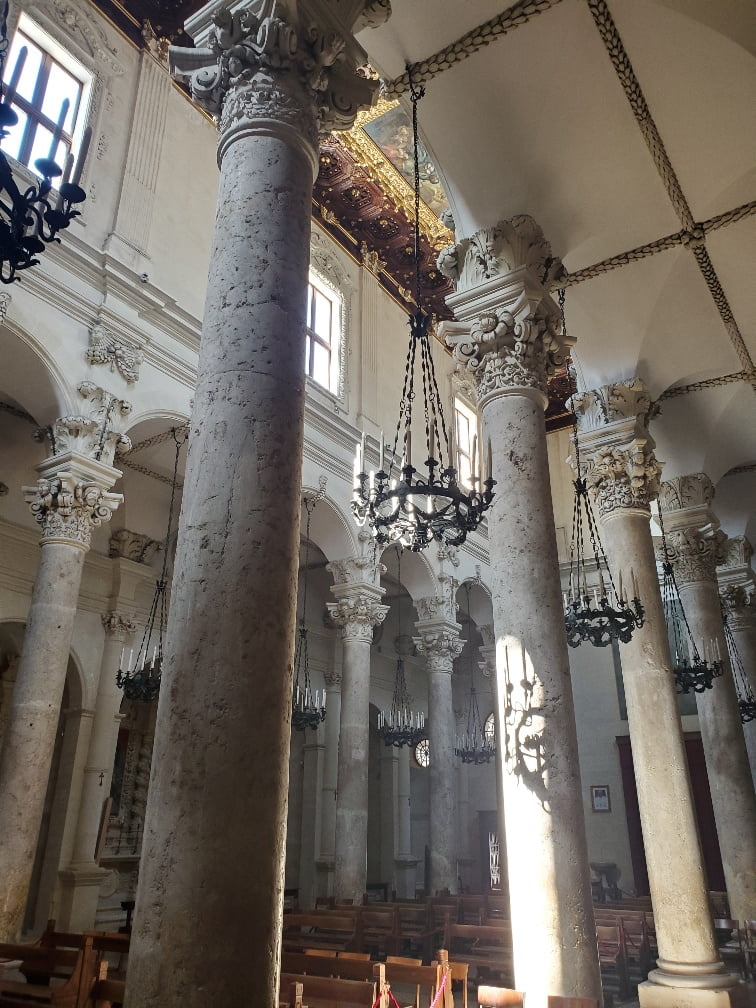
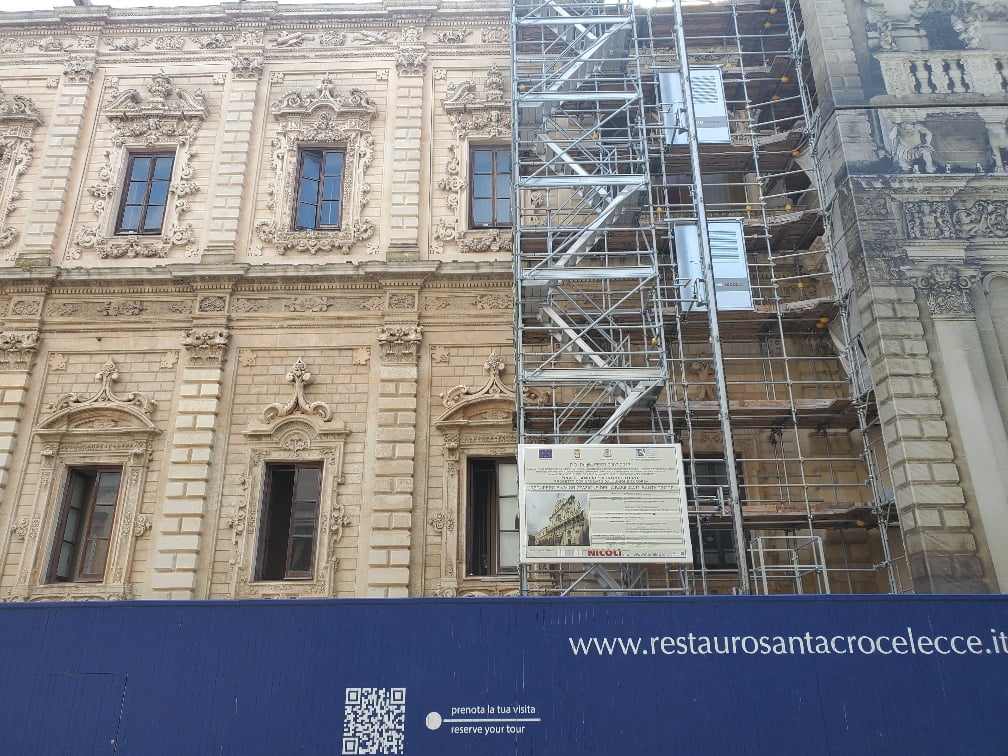
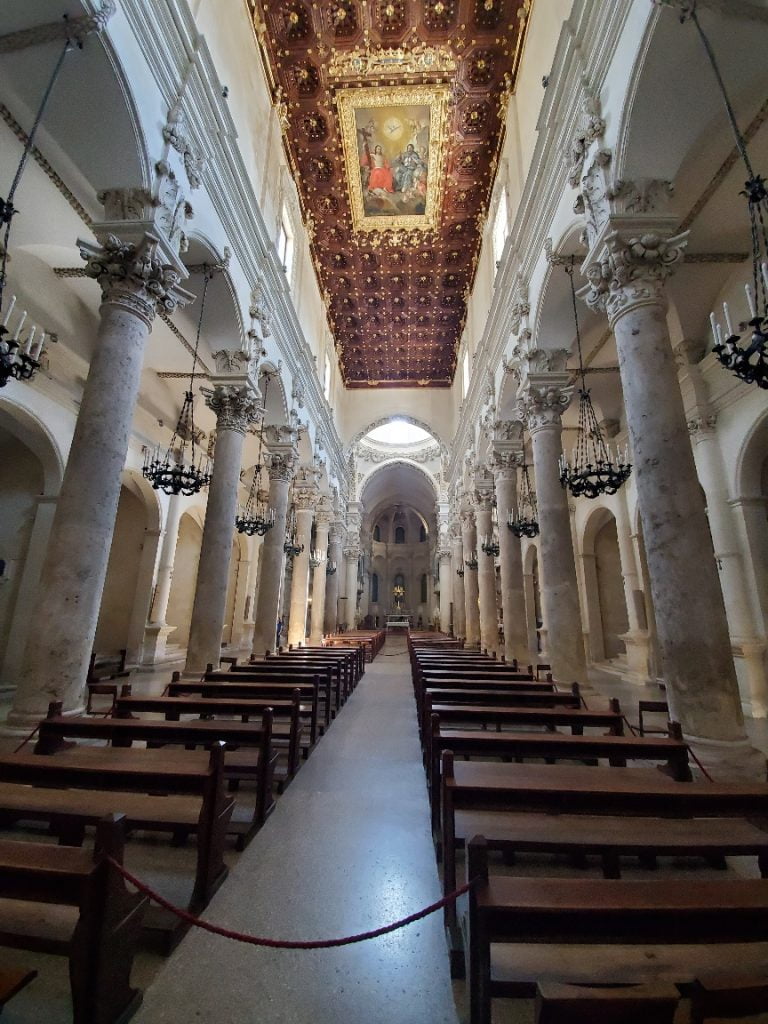
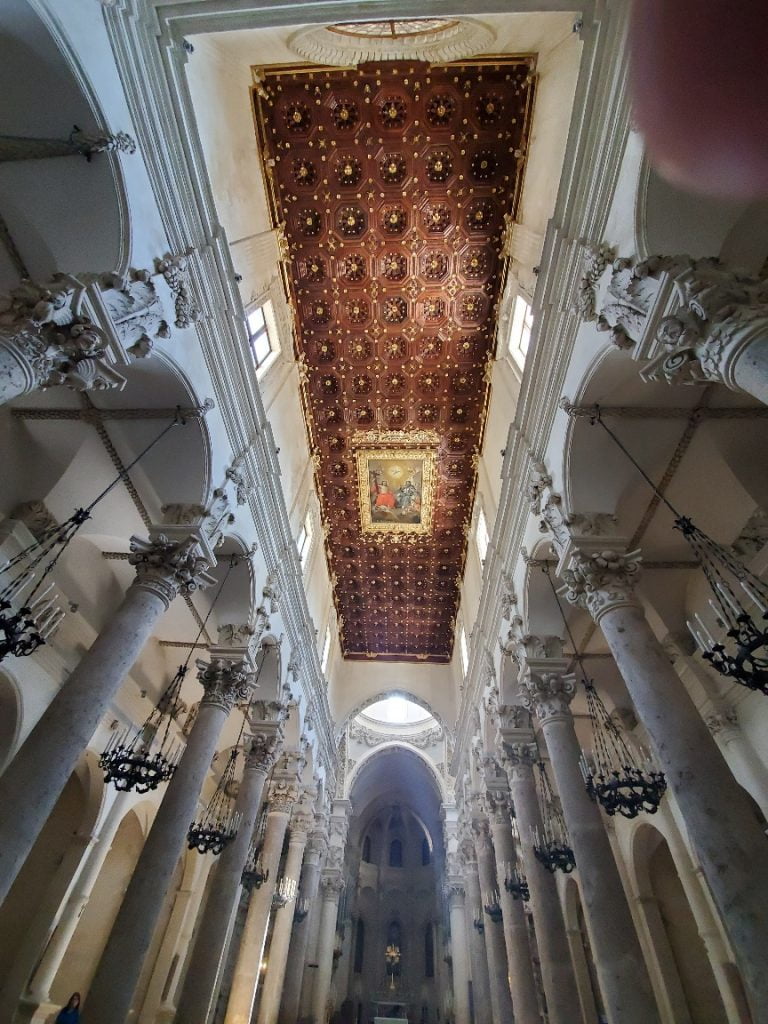
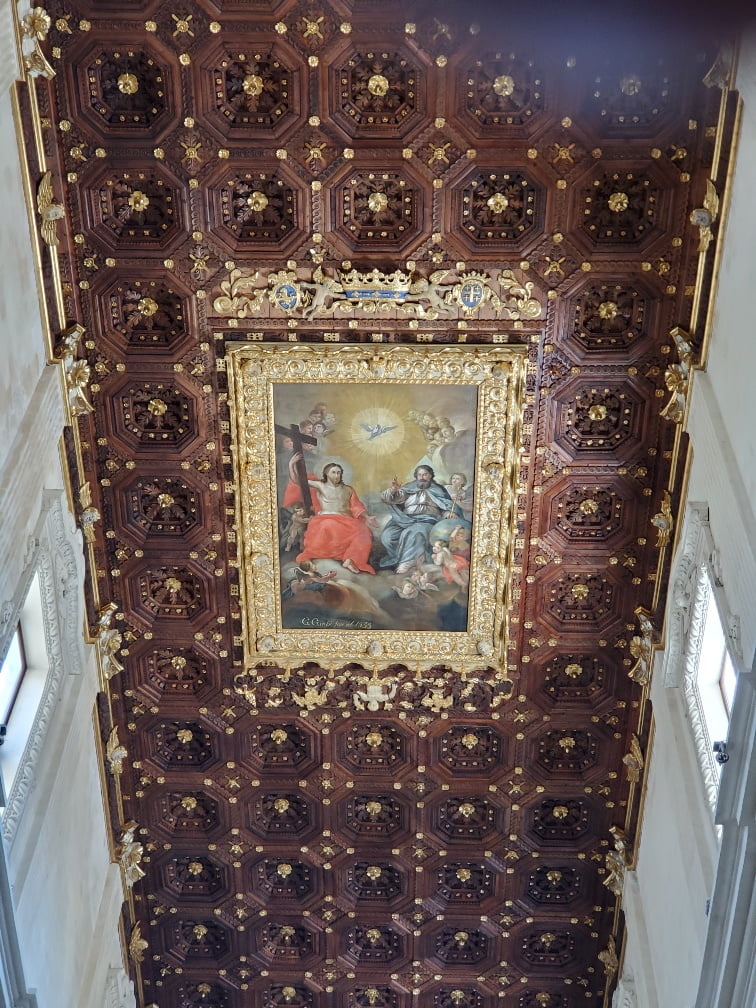

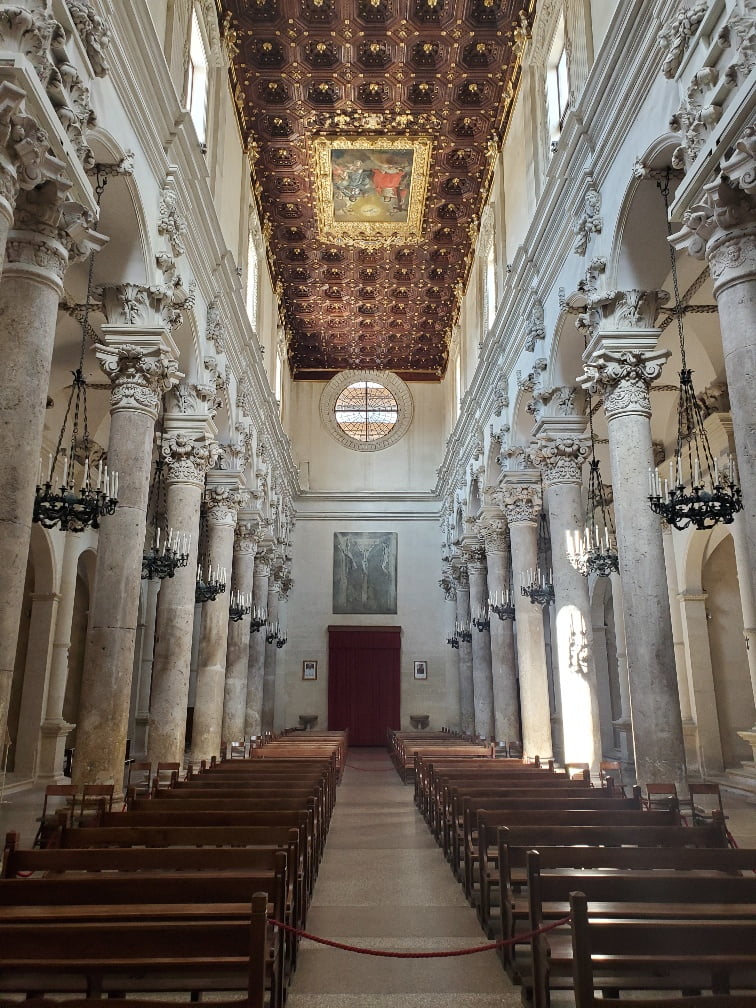
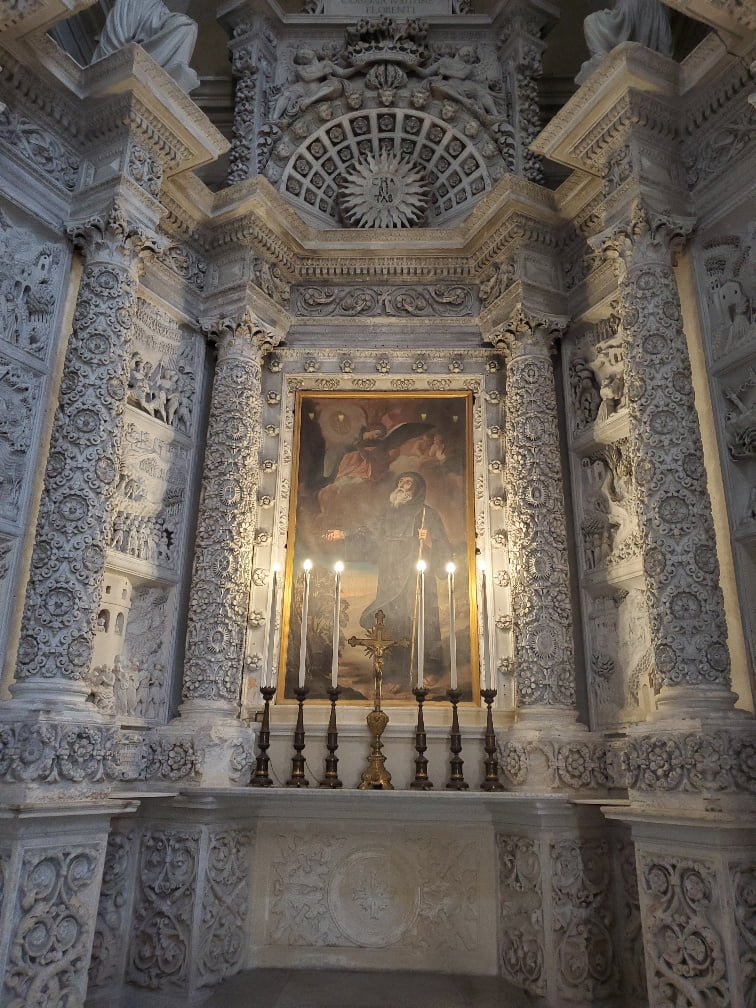


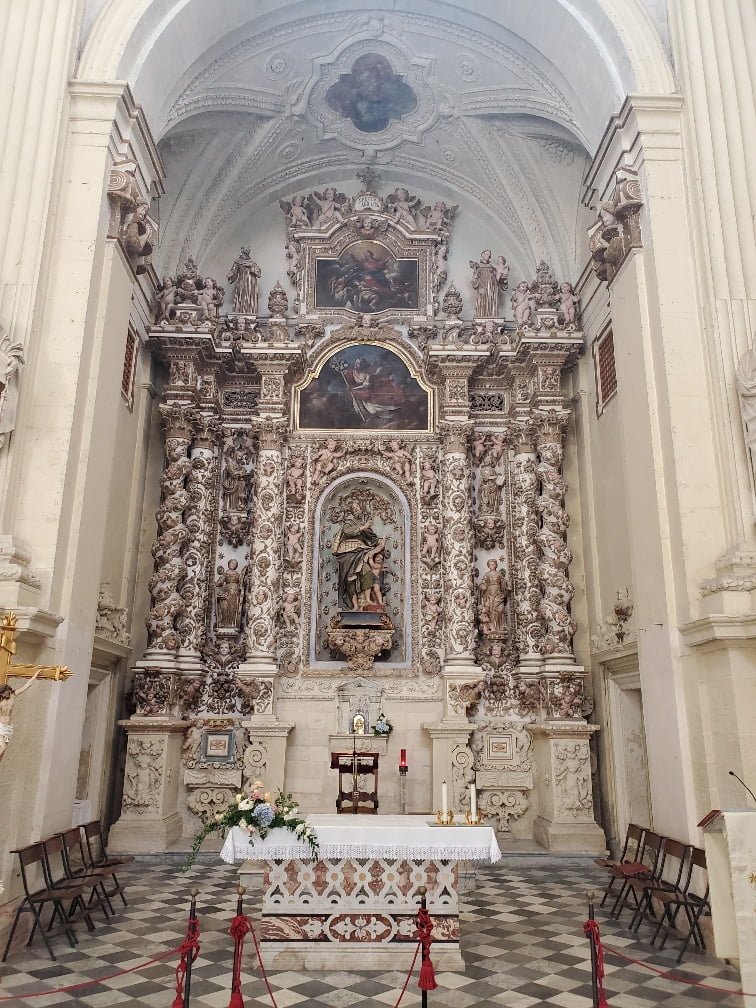
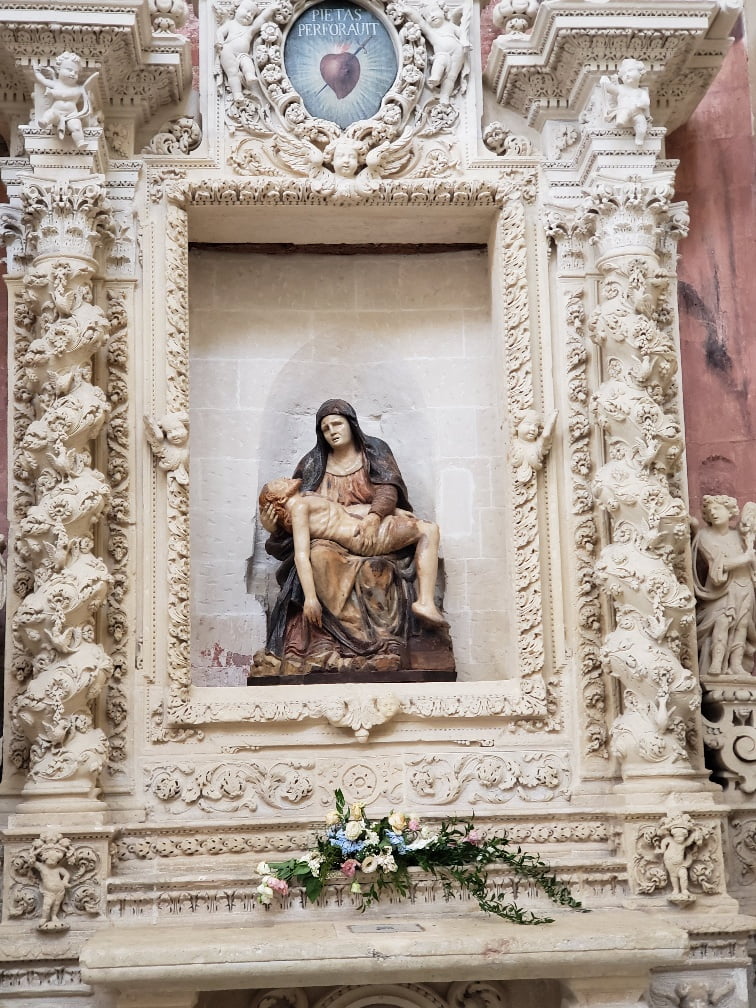
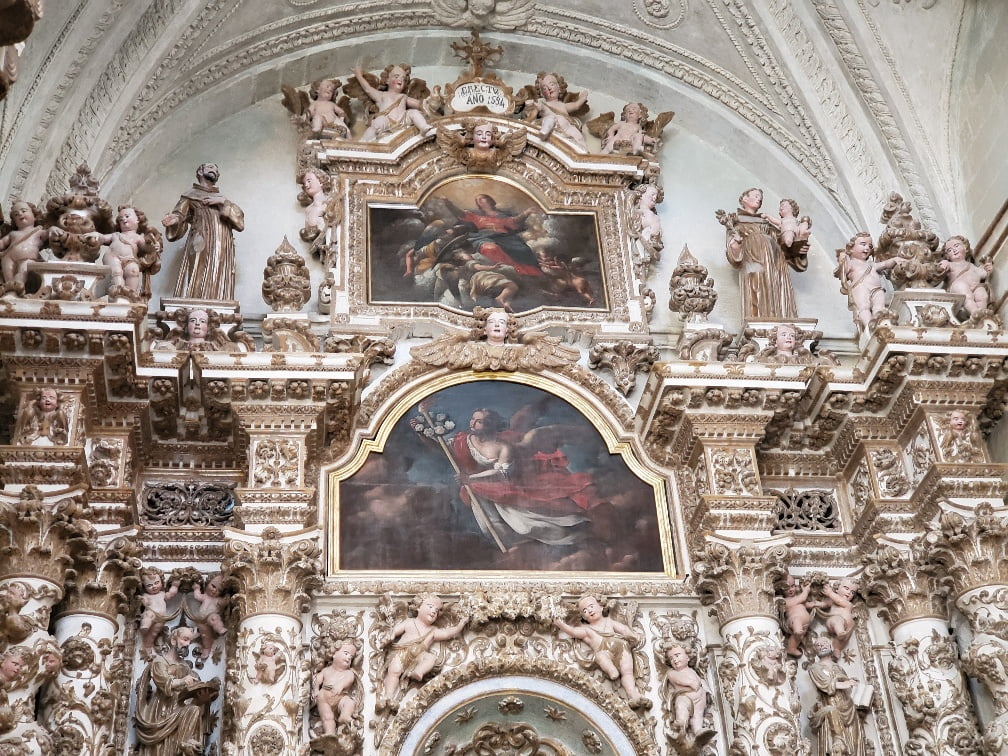

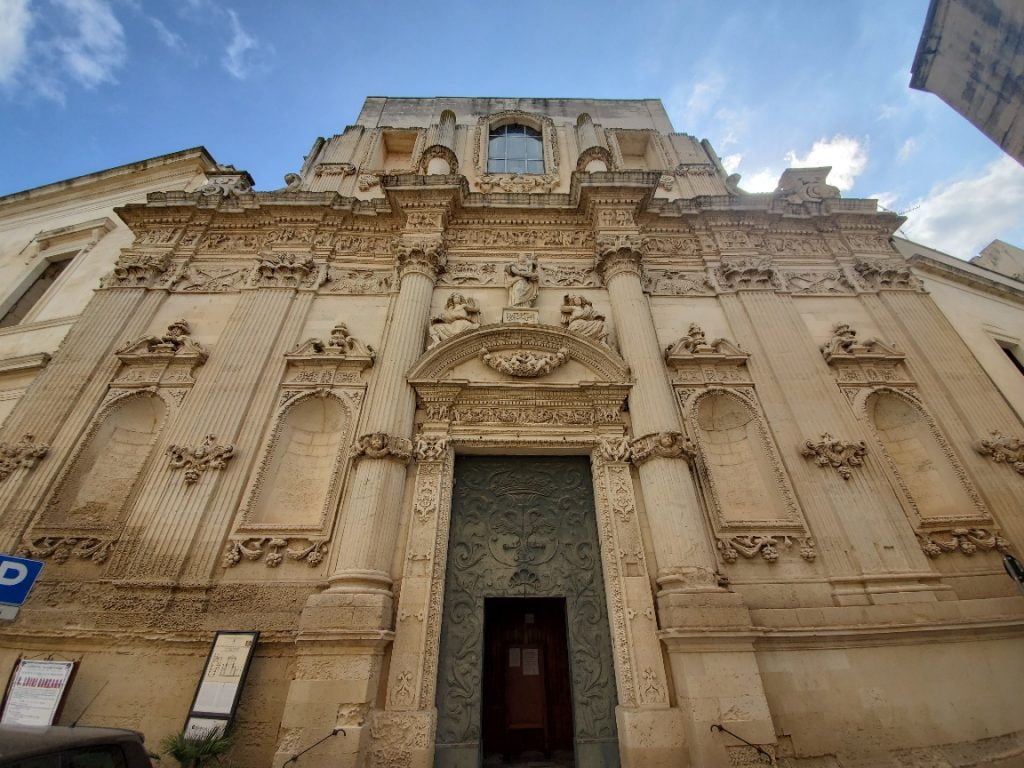

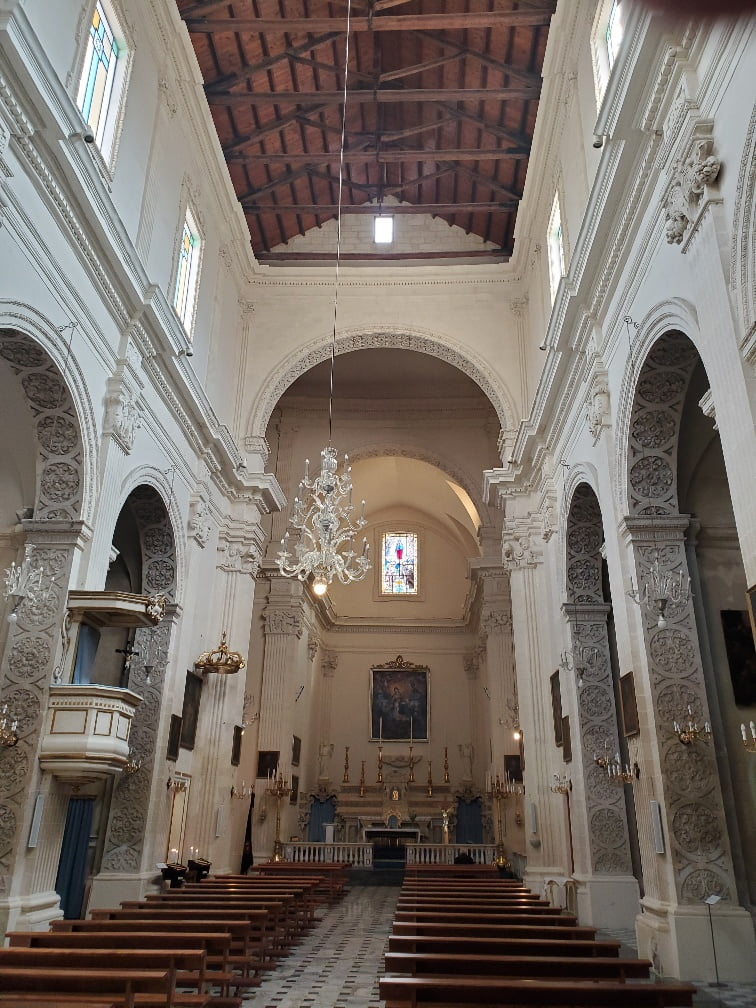
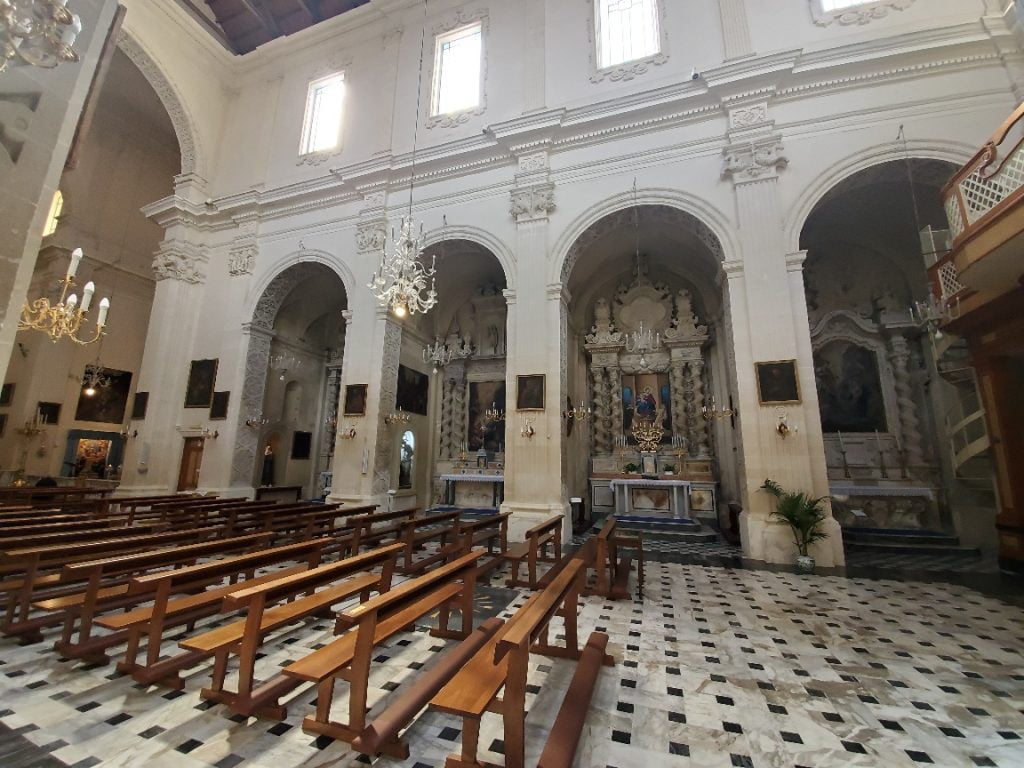


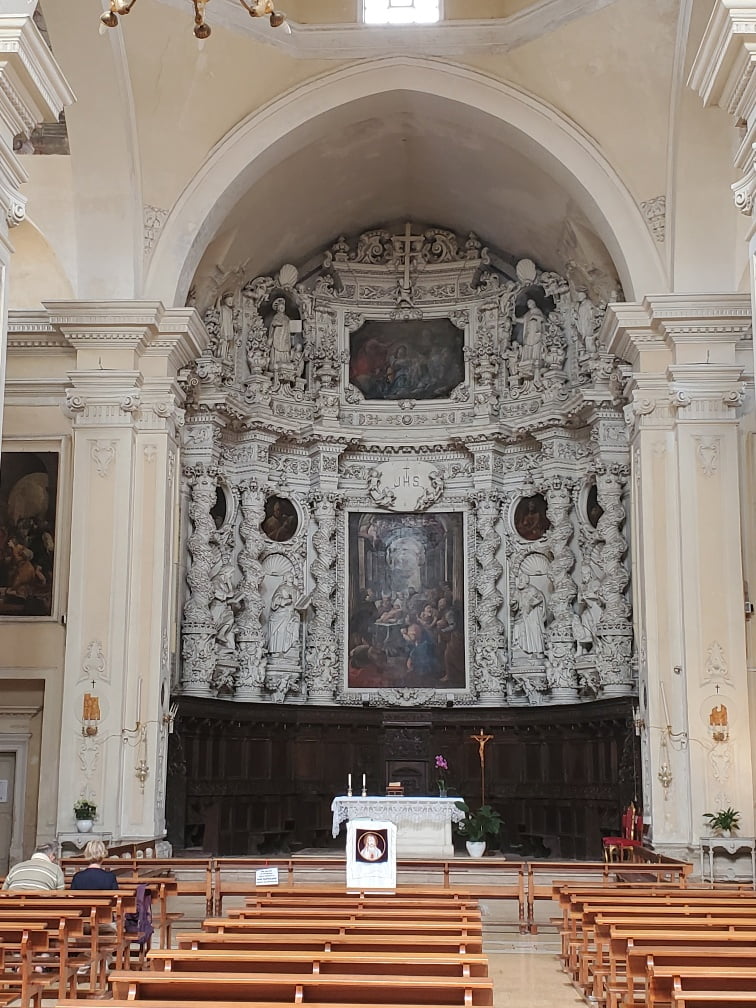
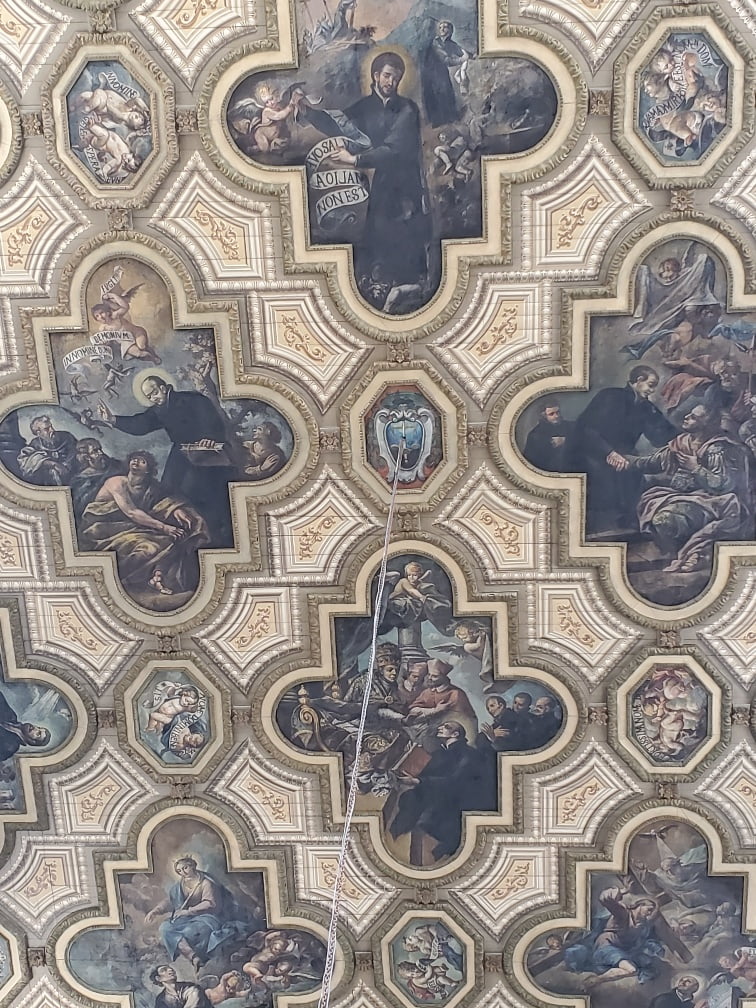
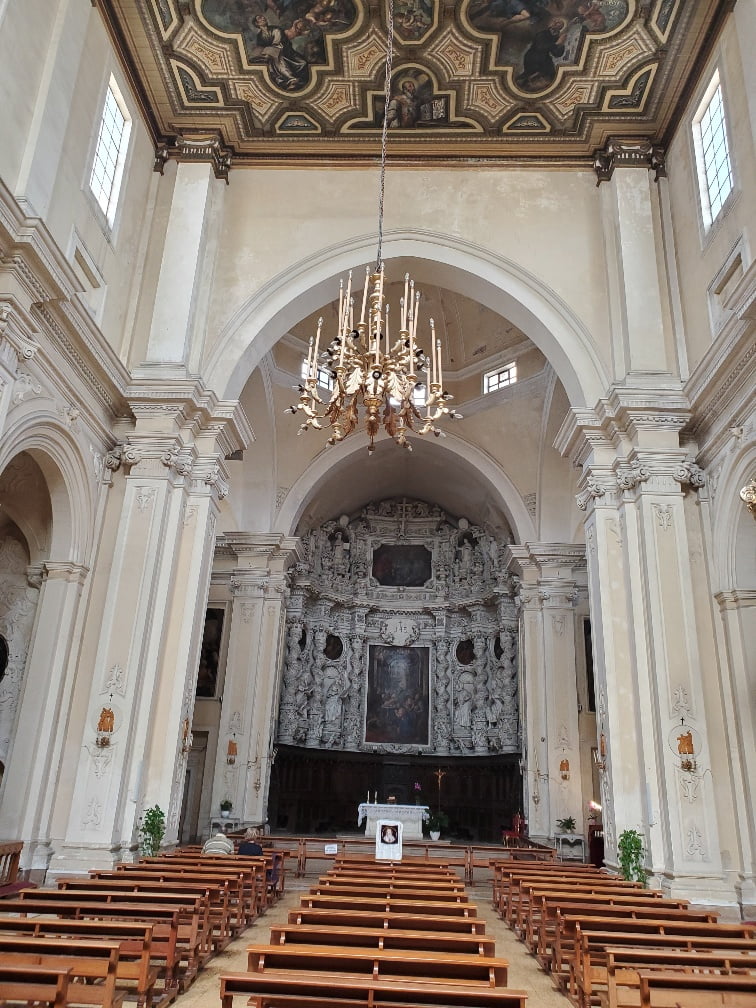

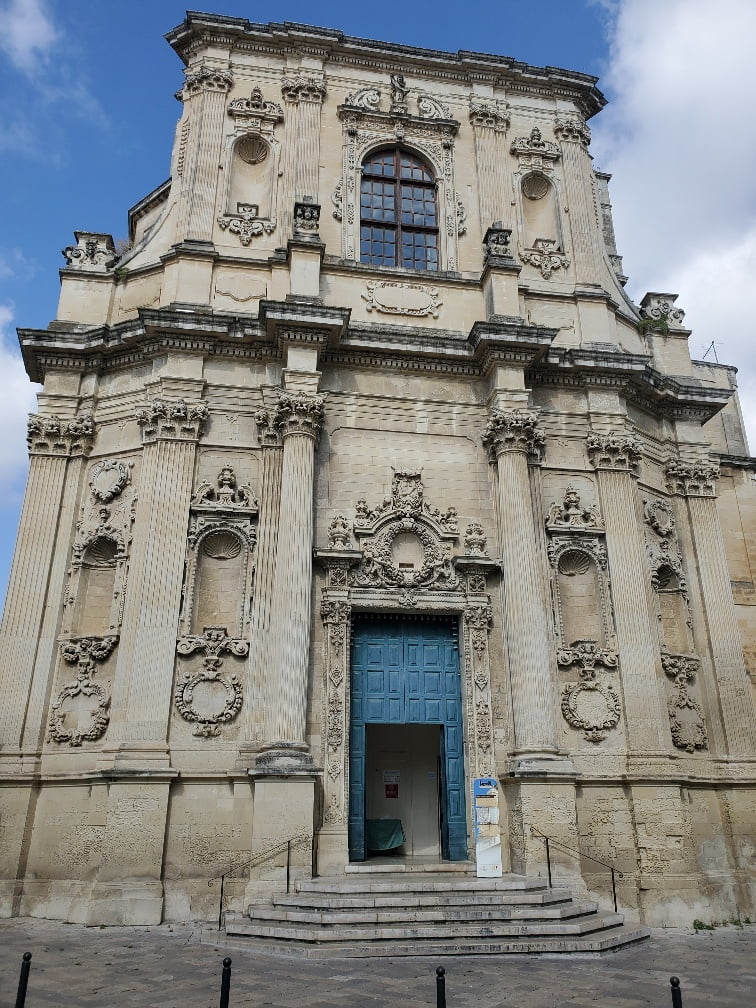

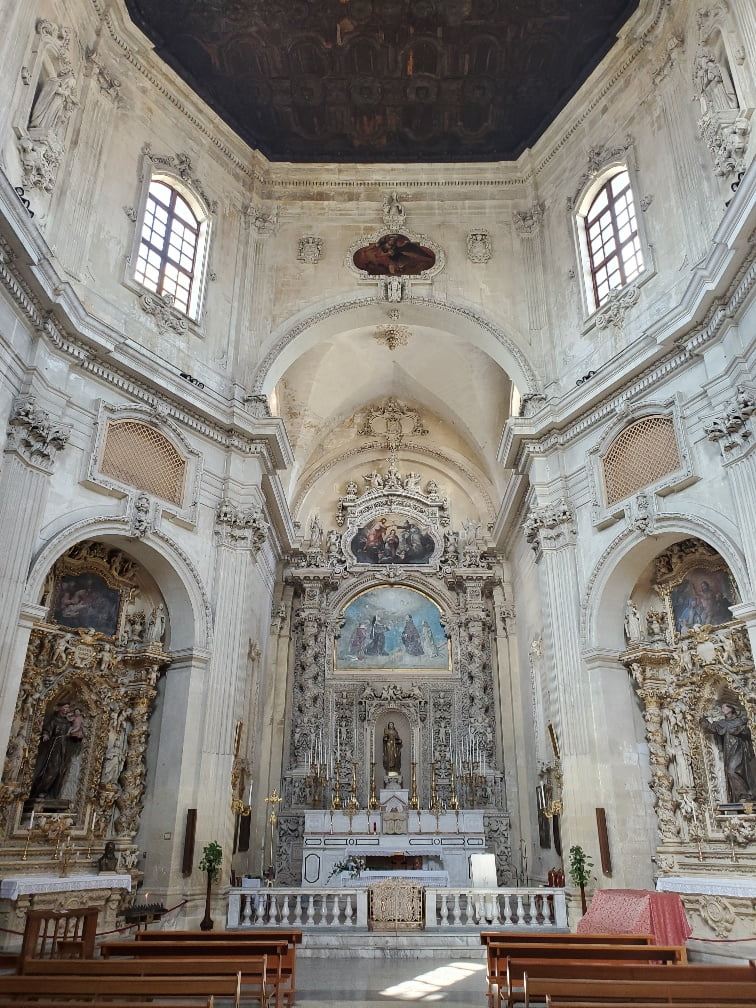
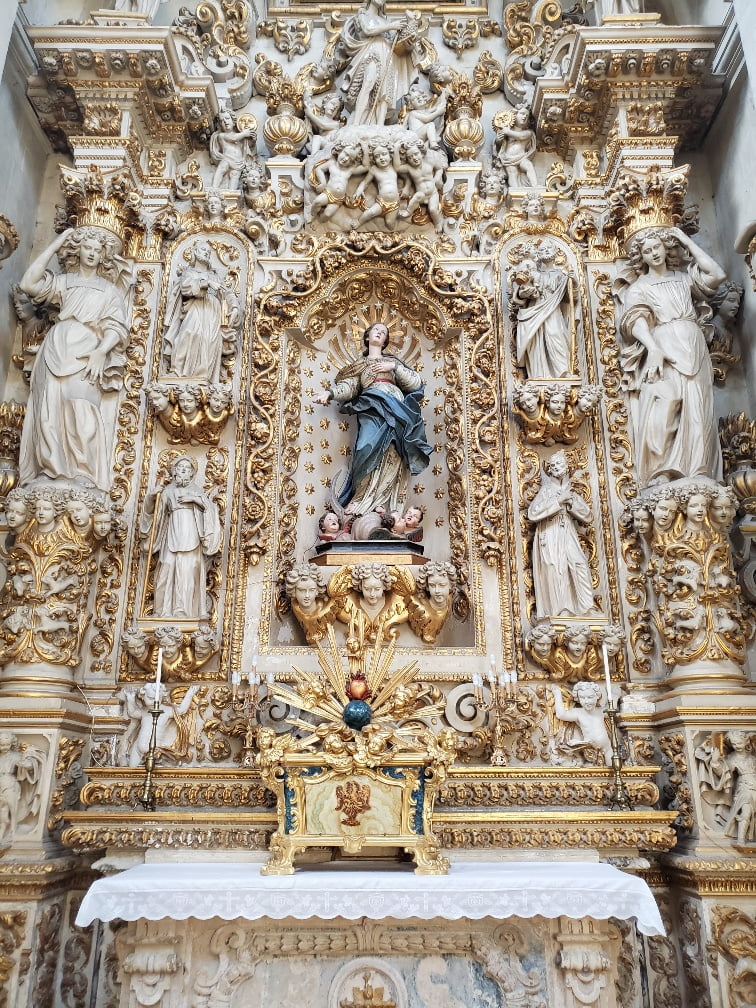
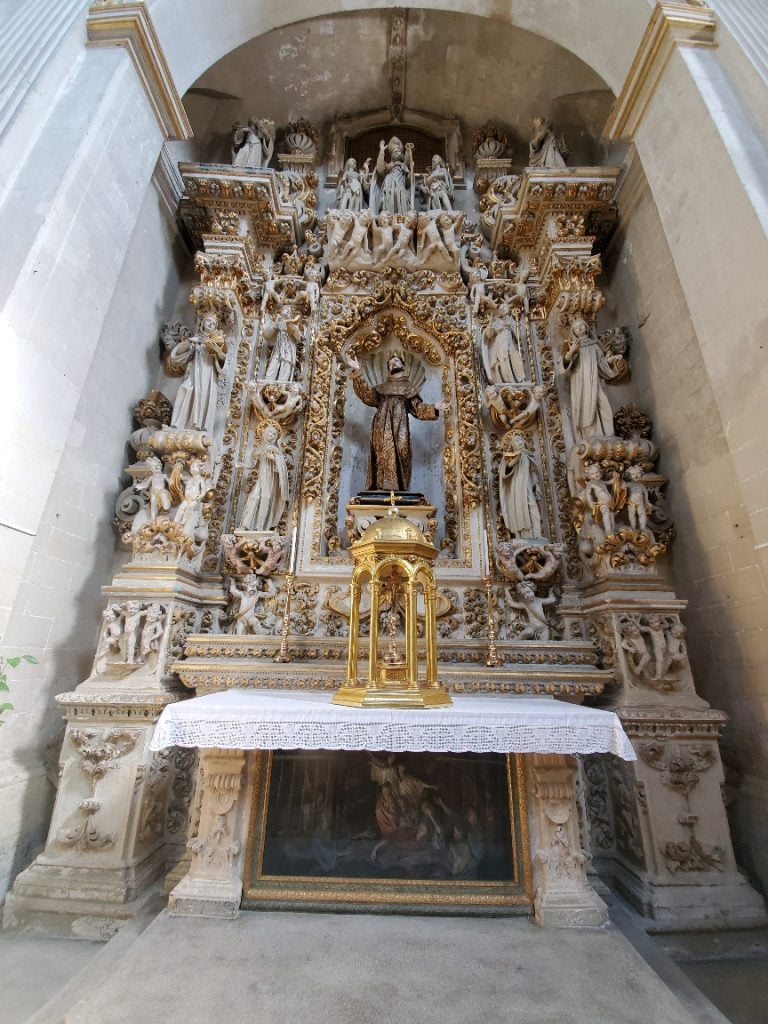
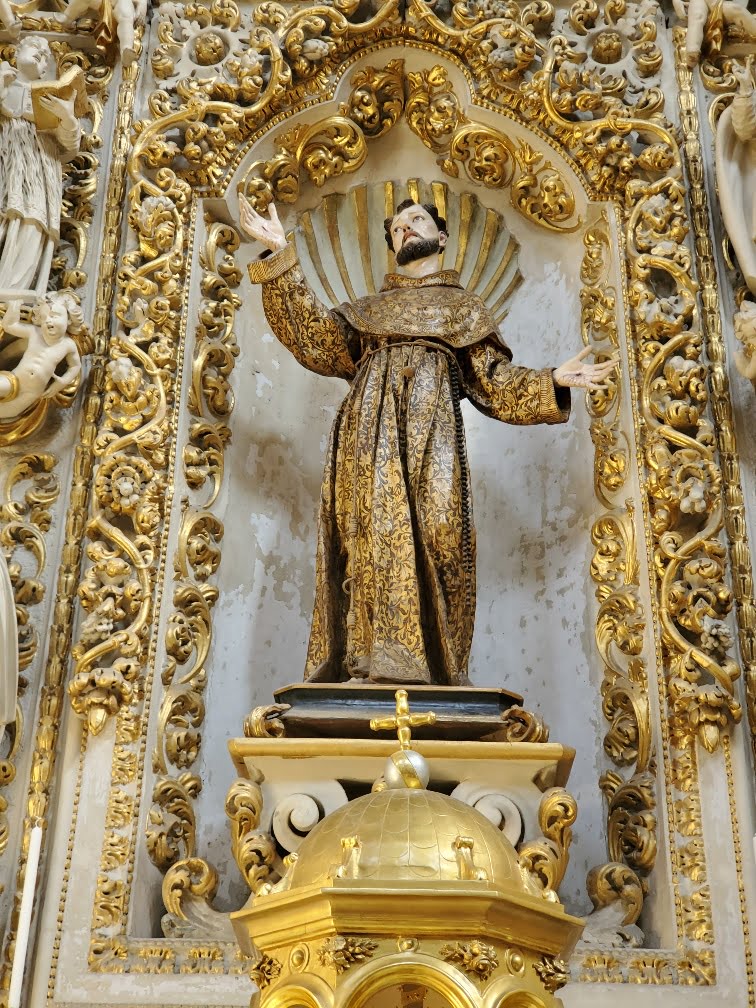


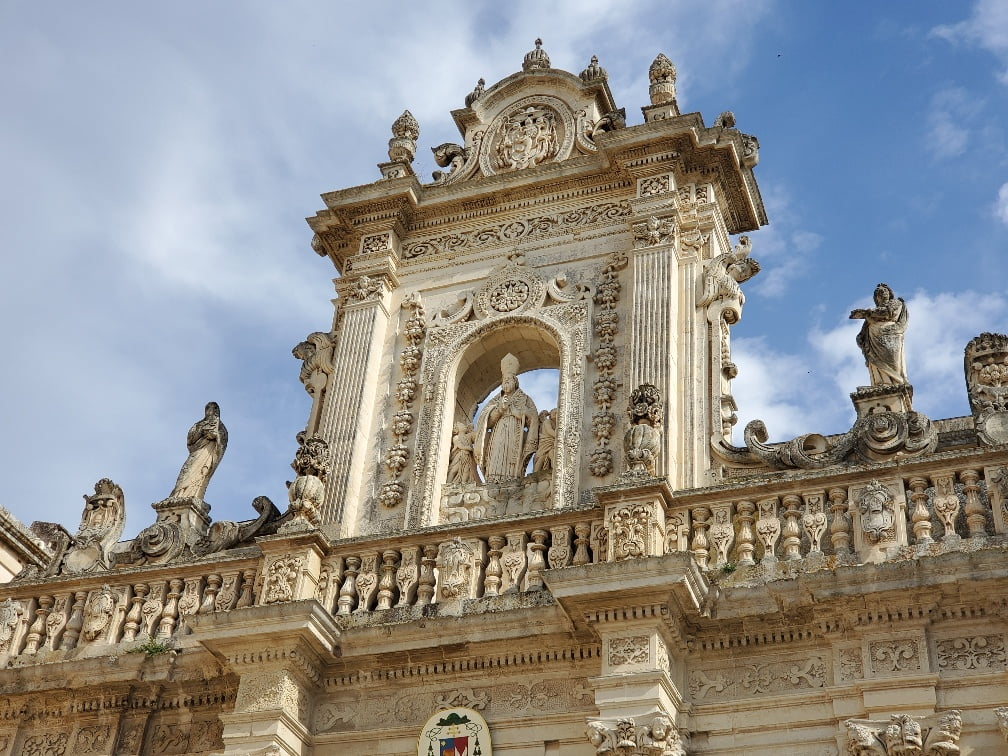
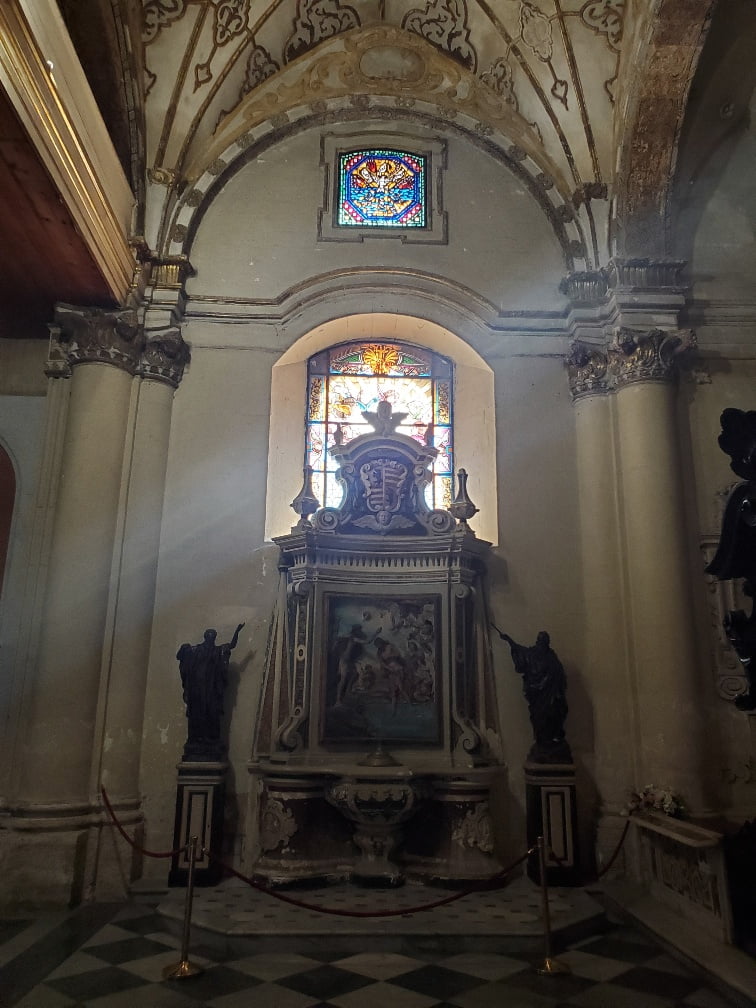
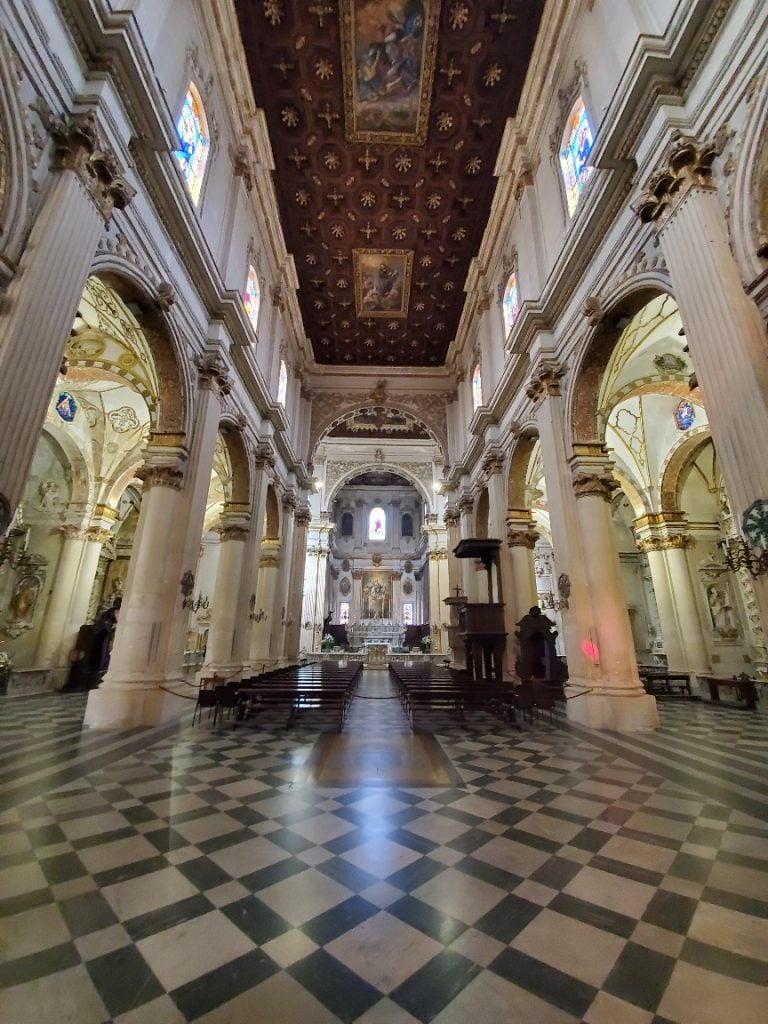
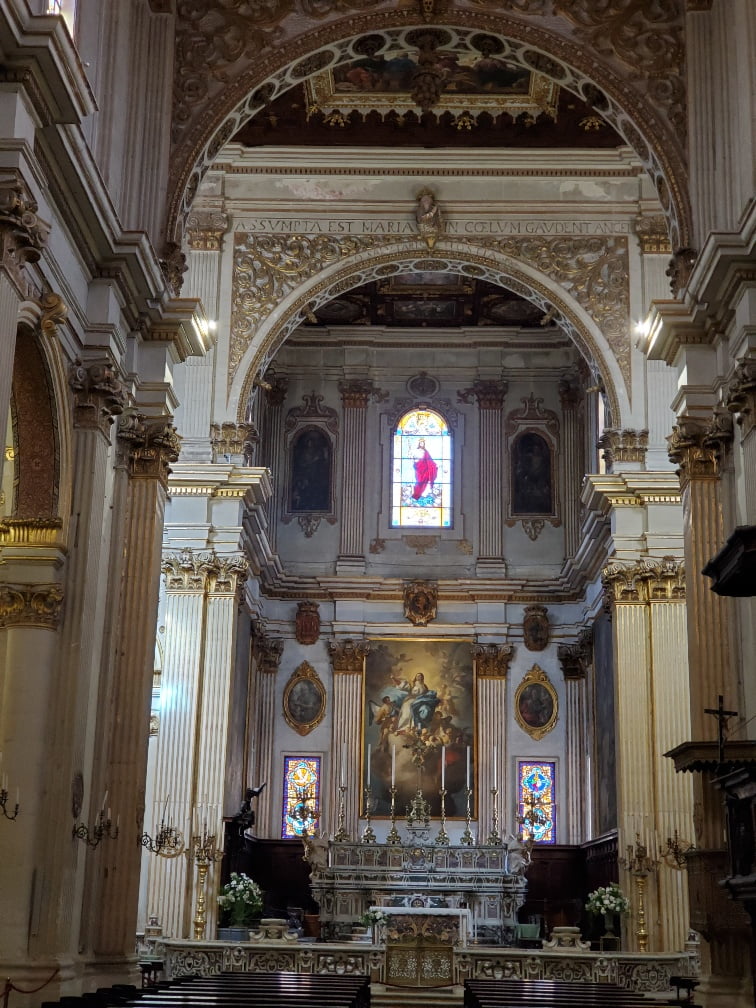


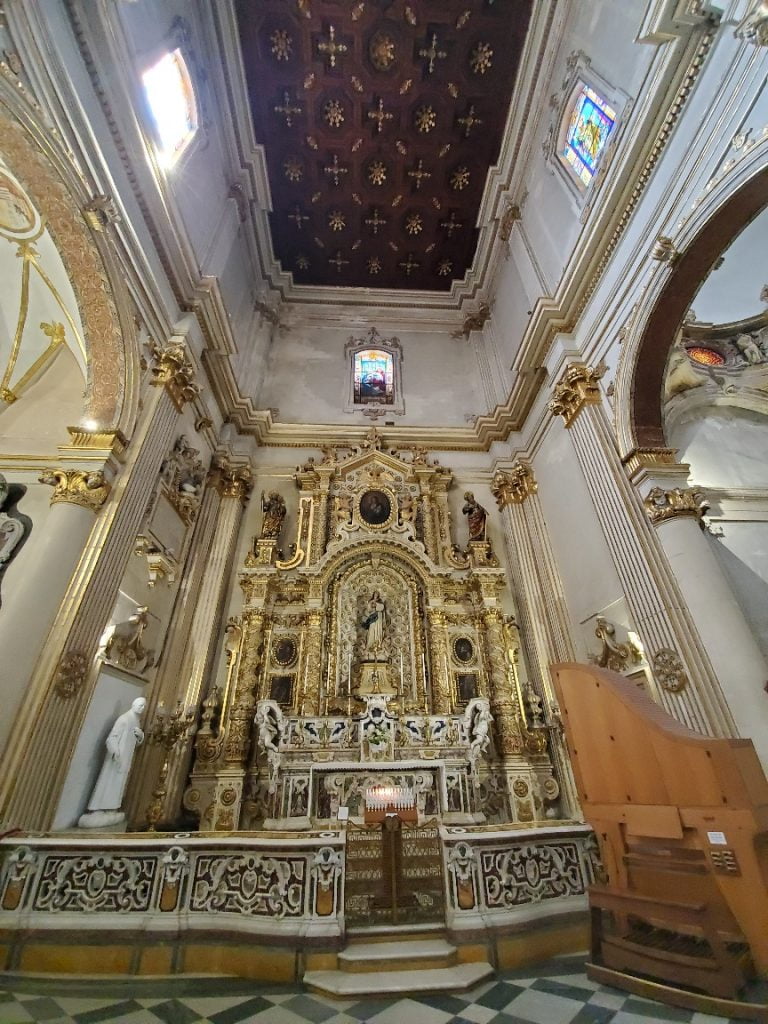


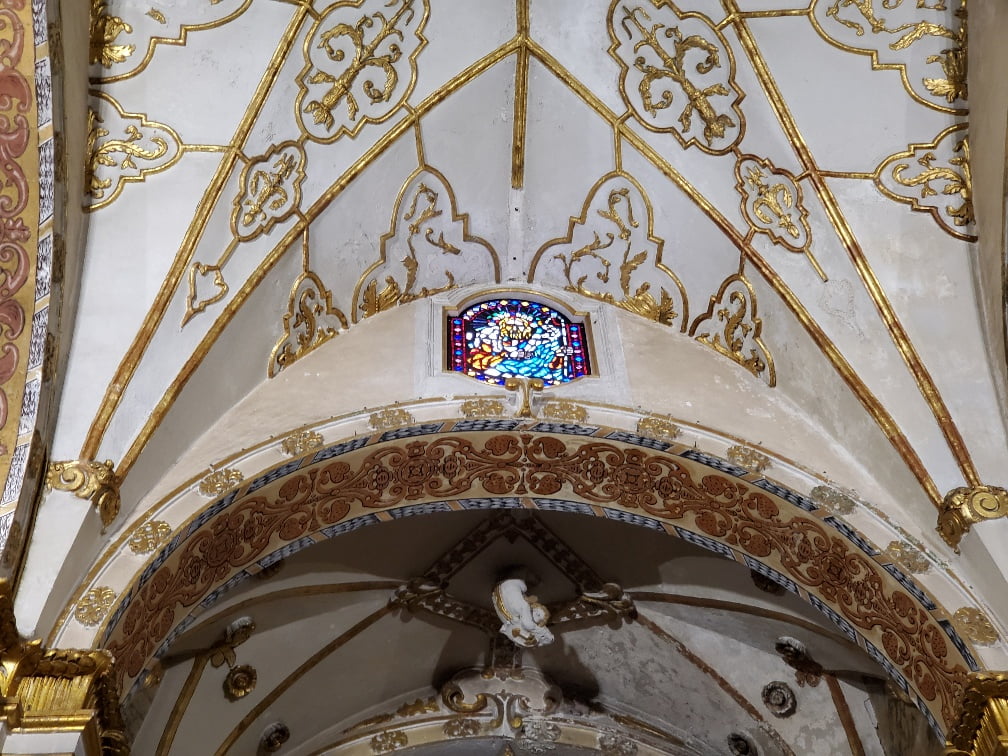
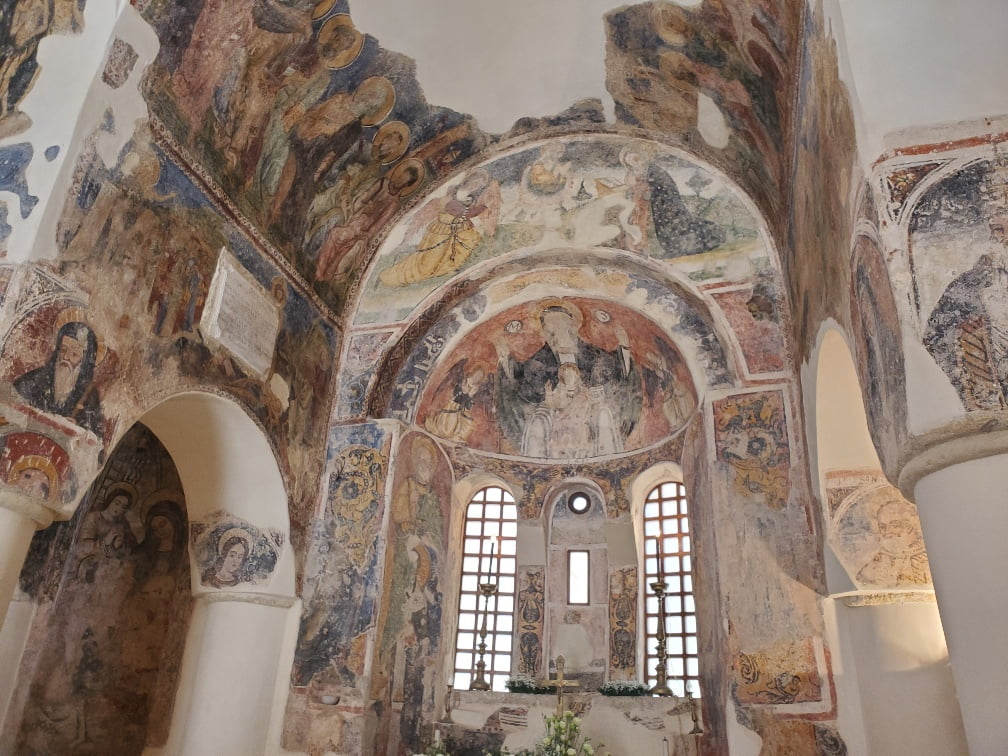
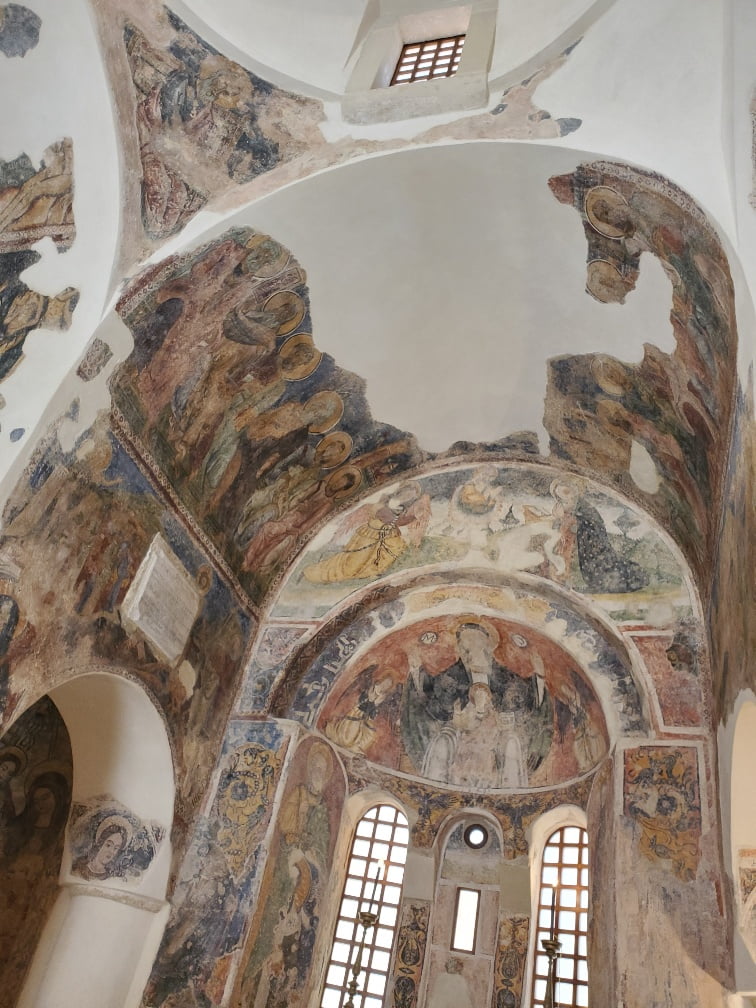
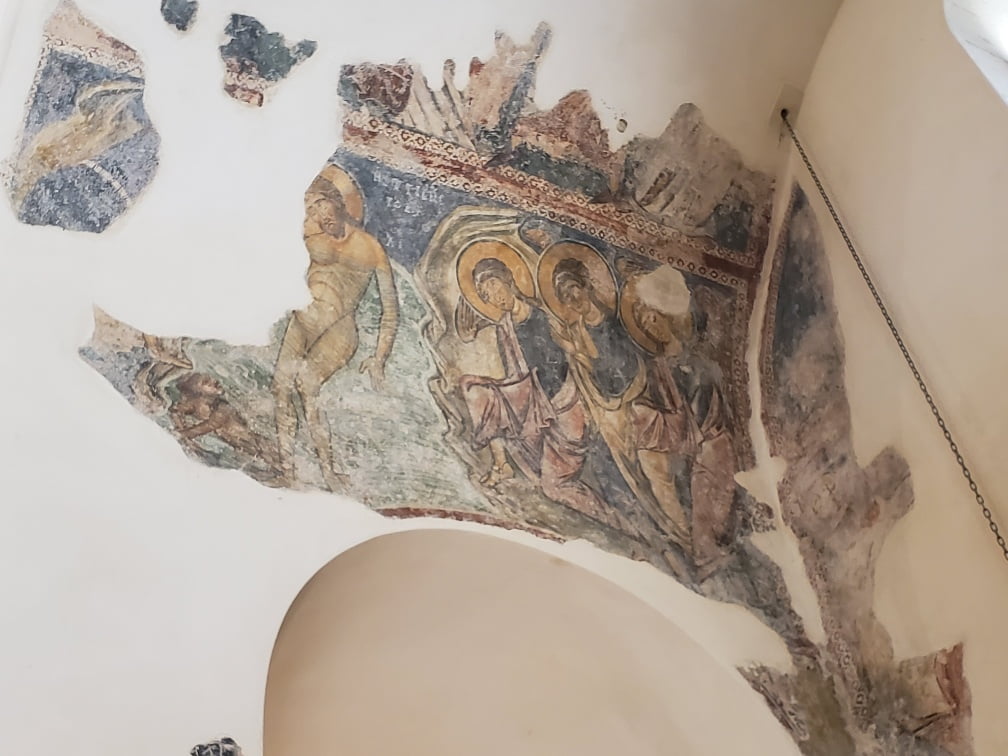
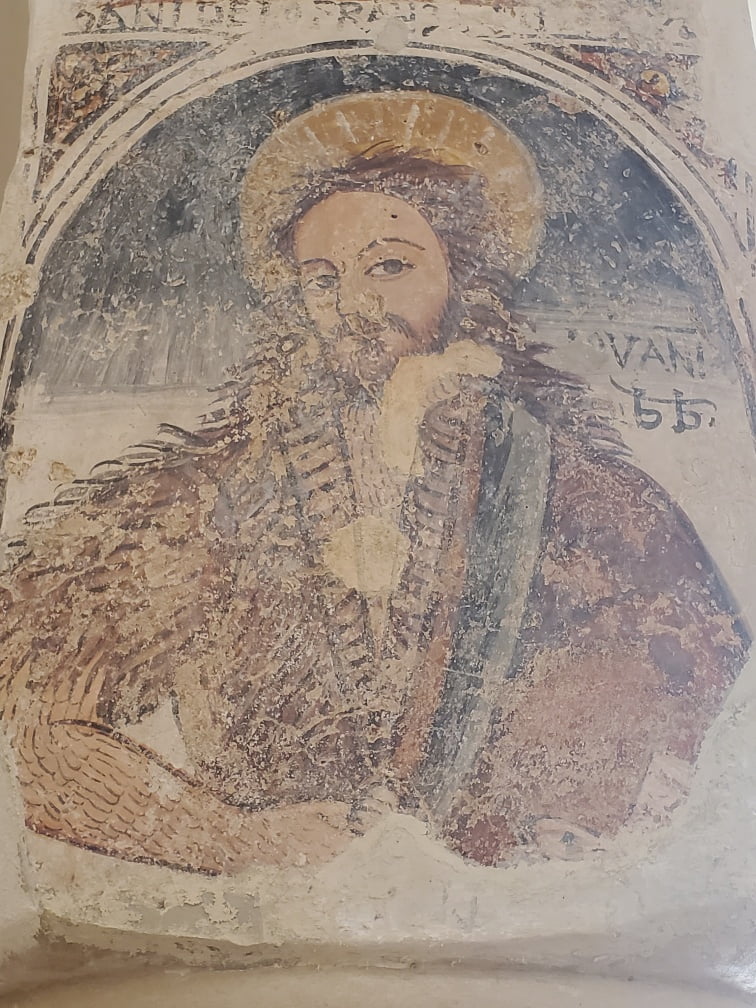
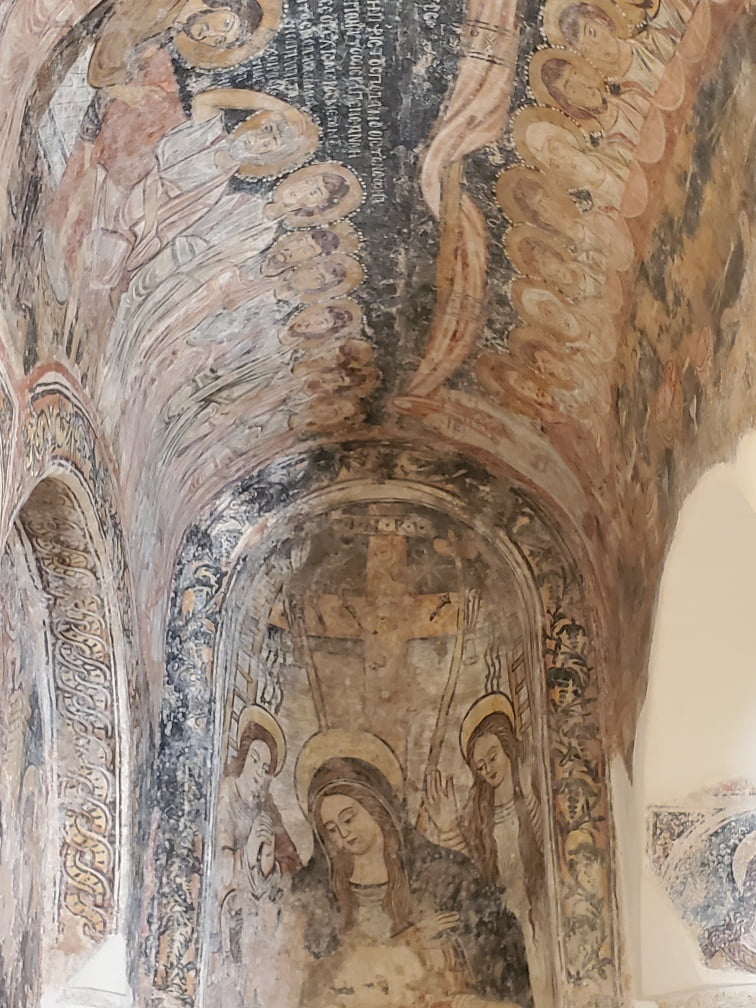
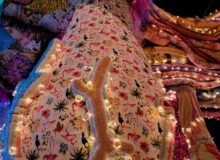
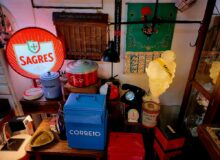
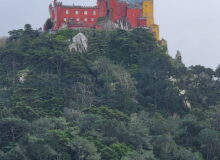
Where’s the pic of the ordinary food? Don’t meatballs stuffed ham & cheese warrant a pic?
The interpretation of meatballs varies from region to region. Sometimes they look like perogies, dry and ovoid and dull. Sometimes they are double cooked, fried at the end, and served in a basket like fries. And other times they are on the plate with pasta in sauce. Meaning sometimes the picture wouldn’t even look like meatballs. But that said, I do have a zillion meal pics in the pipeline for the next few posts.